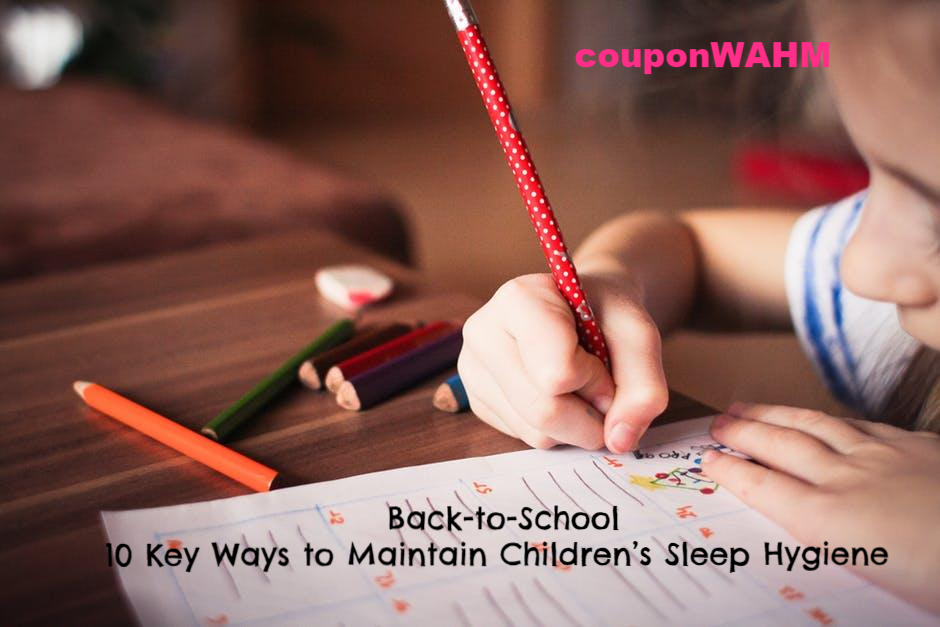
Back-to-School- 10 Key Ways to Maintain Children’s Sleep Hygiene
“Sleep is the third pillar of health, along with nutrition and movement, that keeps us healthy and balanced. Yet, as a society, we really undervalue the role of sleep in keeping us healthy,” said Dr. Crabtree.
- Keep a consistent sleep schedule – Make sure you wake your kids up and have them go to bed at about the same time on weeknights and weekend nights. Bedtime and wake time should not differ from day to day by more than an hour.
- Establish a regular, relaxing bedtime routine – Make the 30 minutes before bed wind-down time. Do not let children watch TV, use electronic devices (smartphones, tablets, etc.), or exercise during this time. Instead, have them do something relaxing, such as playing with quiet toys, reading a book, or listening to soothing music.
- Create an environment in your kid’s room that is only for sleeping – This means kids’ bedrooms should be comfortable, quiet, and dark. Make sure the bedroom is not too warm (keep it 74 degrees or lower), as warm temperatures interfere with sleep. It is also very important to get all technology, including TVs, cell phones, computers, tablets, etc., out of the bedroom.
- Make sure your family is eating regular meals throughout the day and having a light snack before bed – Do not feed kids large amounts of sugar or chocolate just before bedtime.
- Children should exercise regularly, but not too close to bedtime – The best time for kids to exercise is first thing in the morning or in the late afternoon. If possible, they should avoid strenuous physical exertion right before bedtime.
- Let kids enjoy the sunshine in the morning – Make sure your kids have the opportunity to spend time outside every day, especially in the morning, as exposure to sunlight or bright light helps keep the body’s internal clock on track.
- Limit your children’s light exposure in the evening, especially after dinner – Dim overhead lights and reduce the brightness of screens.
- Avoid putting kids down for naps if they are having trouble falling asleep at bedtime – Naps are developmentally appropriate in young children, and some adolescents benefit from a short afternoon nap (30-45 minutes right after school).
- Do not allow kids to consume caffeine after 4 p.m. or within six hours of bedtime – Caffeine has a half-life of four to six hours, which means it should still be helping you stay awake four to six hours after you take it. Consuming caffeine too close to bedtime makes it hard to fall asleep.
- Be mindful of teenagers’ unique sleep clock – If you have teenagers in the house, keep in mind that most teens’ biology will not allow them to fall asleep any earlier than 10:30 or 11 p.m. And teens need eight-10 hours of sleep per night.
As a lead researcher on sleep and fatigue in children undergoing cancer treatment and brain tumor survivors, sleep is a major focus for Dr. Crabtree’s work. She recently spoke at a TedX Talk in Memphis on how very early school start times are detrimental to the health of teenagers as well as those around them. Dr. Crabtree underscores how insufficient sleep in kids and adults contributes to making us overweight, sick, and sluggish.
St. Jude Children’s Research Hospital is leading the way the world understands, treats, and cures childhood cancer and other life-threatening diseases. It is the only National Cancer Institute-designated Comprehensive Cancer Center devoted solely to children. St. Jude is ranked the No. 1 pediatric cancer hospital by U.S. News & World Report. Treatments developed at St. Jude have helped push the overall childhood cancer survival rate from 20 percent to 80 percent since the hospital opened more than 50 years ago. St. Jude freely shares the breakthroughs it makes, and every child saved at St. Jude means doctors and scientists worldwide can use that knowledge to save thousands of more children. Families never receive a bill from St. Jude for treatment, travel, housing, and food — because all a family should worry about is helping their child live. To learn more, visit stjude.org or follow St. Jude on social media at @stjuderesearch.
